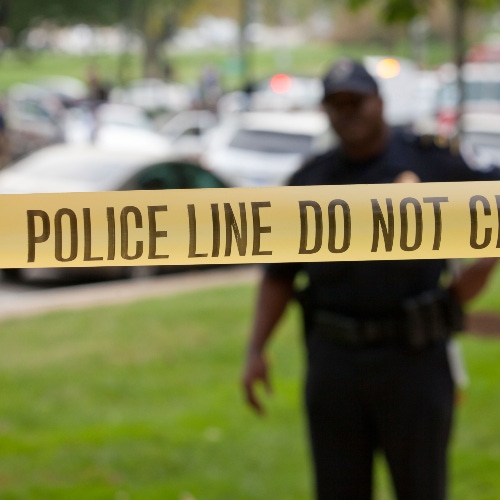AT&T, Verizon, T-Mobile tout Z-axis support for 911
Z-axis data, along with X- and Y-axis data, ought to let emergency responders know exactly which floor a 911 caller might be on. And now, AT&T, Verizon and T-Mobile are successfully capturing that data.

The nation's biggest wireless network operators told the FCC earlier this month that they are successfully securing Z-axis location data for 911 calls. That's critical because the information can be combined with existing X- and Y-axis data in order to let emergency responders know exactly which floor a 911 caller in a skyscraper is located, instead of requiring first responders to search the entire building.
"In sum, the nationwide wireless providers, in conjunction with Apple and Google, today are delivering accurate and timely Z-axis information with wireless 911 calls so that public safety professionals can invest in and leverage vertical location information to improve public safety outcomes," the CTIA – a trade association that represents the nation's big wireless network operators – wrote in a report to the FCC.
The association said it conducted thousands of test 911 calls this spring across more than 50 multi-story buildings that varied in height, construction materials (such as glass, brick and stone), and use (including commercial and residential). CTIA said the tests showed that the operators are successfully locating at least 80% of 911 calls within three meters vertically, per FCC requirements outlined in 2019.
The association reported the tests relied on Google's Android Emergency Location Service (ELS) that was introduced in 2018, and Apple's Hybridized Emergency Location (HELO) that was also introduced in 2018. The two companies provide the underlying software for the vast majority of smartphones in the US market. The companies have variously explained that their location technologies rely on data ranging from cell tower location information to on-device data sources like GPS and Wi-Fi access points.
To the Z-axis, and beyond
To be clear, obtaining such Z-axis location data for 911 calls is just one step in the process. In order to deliver that information to emergency responders like police and firefighters, 911 call centers must ensure their systems are able to receive Z-axis location data, and then they must accurately deliver that data to on-site personnel.
Figure 1:  (Source: B Christopher/Alamy Stock Photo)
(Source: B Christopher/Alamy Stock Photo)
Such data is critical, according to officials from the First Responder Network Authority (FirstNet), an independent agency within the US Department of Commerce's National Telecommunications and Information Administration (NTIA) that oversees a network specifically dedicated to US emergency responders and the public safety community. FirstNet runs its service through AT&T's network.
"Imagine a call for disturbance from inside a multistory building, and two officers respond to the scene," FirstNet's Jeff Bratcher wrote last year. "The officer who arrives first enters the building and reports shots fired. The arriving second officer and dispatch both track the location of the first officer, without voice prompts, to the fourth floor. The second officer goes immediately to the scene for backup."
The agency said it launched Z-axis location data across more than 100 major US metropolitan areas for its users last year, using the barometric sensor built into most smartphones.
It's also worth noting that Z-axis location data is just one element of many in the broad scope of 911. For example, AT&T announced this month that it will now route 911 calls to emergency call centers based on phone GPS data rather than cell tower data.
Separately, FCC Chairwoman Jessica Rosenworcel proposed a plan earlier this year to use spectrum auction proceeds to pay for a digital upgrade to the nation's 911 services.
She said such "next-generation" 911 systems could support text, data and video communications alongside voice calls. "For those who call 911, it will mean the opportunity to offer real-time video of the emergency. It will mean the ability to provide first responders with instantaneous pictures. It will mean the ability to transmit a patient's medical records right to 911 dispatchers. For those who take calls in an emergency, all of this data can expedite and inform public safety efforts, and dramatically improve emergency response," according to the FCC.
Related posts:
— Mike Dano, Editorial Director, 5G & Mobile Strategies, Light Reading | @mikeddano
About the Author(s)
You May Also Like




_International_Software_Products.jpeg?width=300&auto=webp&quality=80&disable=upscale)







